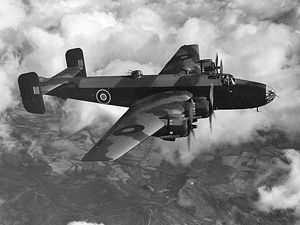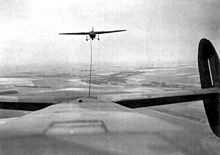Northwest African Troop Carrier Command
The Northwest African Troop Carrier Command (NATCC) was a sub-command of the Northwest African Air Forces which itself was a sub-command of the Mediterranean Air Command (MAC). These new Allied air force organizations were created at the Casablanca Conference in January 1943 to promote cooperation between the British Royal Air Force (RAF), the American United States Army Air Force (USAAF), and their respective ground and naval forces in the North African and Mediterranean Theater of Operations (MTO). Effective February 18, 1943, the NATCC and other MAC commands existed until December 10, 1943 when MAC was disbanded and the Mediterranean Allied Air Forces (MAAF) were established. Brigadier General Paul Williams was the commander of NATCC.[1]
The components of NATCC at the time of the Allied invasion of Sicily (Operation Husky) on July 10, 1943 are illustrated below.[2][3][4]




Northwest African Troop Carrier Command
Brigadier General Paul L. Williams
| 51st Troop Carrier Wing Brig. Gen. Ray Dunn |
52nd Troop Carrier Wing Brig. Gen. Harold Clark |
RAF Detachment |
|---|---|---|
| 60th Troop Carrier Group Lt. Col. Frederick Sherwood 10th Squadron, C-47 |
61st Troop Carrier Group Colonel Willis Mitchell 14th Squadron, C-47 |
No. 38 Wing Air Commodore William Primrose No. 295 Squadron (Det.), Halifax |
| 62nd Troop Carrier Group Lt. Col. Aubrey Hurren 4th Squadron, C-47 |
313th Troop Carrier Group Colonel James Roberts Jr. 29th Squadron, C-47 | |
| 64th Troop Carrier Group Colonel John Cerny 16th Squadron, C-47 |
314th Troop Carrier Group Colonel Clayton Stiles 32nd Squadron, C-47 | |
| 316th Troop Carrier Group Colonel Jerome McCauley 36th Squadron,[5] C-47 | ||
Note:
In mid-1943, to facilitate transport and supply operations for Operation Husky, the USAAF 315th Troop Carrier Group (34th & 43rd Squadrons) was sent from England to Tunisia and assigned to the Mediterranean Air Transport Service which along with NATCC, was a sub-command of the Mediterranean Air Command.[6]
A tragedy occurred over the Farello Airstrip, when American anti-aircraft gunners mistook American troop carrier transports for enemy planes. On the night of July 11, 1943, 23 of 144 aircraft failed to return to Tunisia. Another 37 planes were badly damaged. The aircraft loss ratio was very high, ~16%. Brigadier General Charles L. Keerans, Jr., the assistant division commander was aboard one of the planes that did not return. The 504th Combat Team suffered a total of 229 casualties on the night of 11 July 1943: 81 dead, 132 wounded, and 16 missing.[7]
Citations
- ↑ Craven, Wesley F. and James L. Cate. The Army Air Forces in World War II, Volume 2, Chicago, Illinois: Chicago University Press, 1949 (Reprinted 1983, ISBN 0-912799-03-X).
- ↑ Richards, D. and H. Saunders, The Royal Air Force 1939-1945 (Volume 2, HMSO, 1953).
- ↑ Howe, George F., Northwest Africa: Seizing the Initiative in the West, Center of Military History, Washington, DC., 1991.
- ↑ Ingrisano, Michael N., Valor Without Arms - A History of the 316th Troop Carrier Group, 1942-1945 - ISBN 1-57638-233-8 - Merriam Press, Fourth Edition (September 2008).
- ↑ http://www.warwingsart.com/12thAirForce/316th.html
- ↑ Richards, D. and H. Saunders, The Royal Air Force 1939-1945 (Volume 2, HMSO, 1953).
- ↑ Garland, Albert N. and Howard McGaw Smyth, United States Army in World War II, Mediterranean Theater of Operations, Sicily and the Surrender of Italy, Center of Military History, United States Army, Washington, D.C., 1993.
References
- Maurer, Maurer, Air Force Combat Units Of World War II, Office of Air Force History, Maxwell AFB, Alabama, 1983.
- Participation of the Ninth & Twelfth Air Forces in the Sicilian Campaign, Army Air Forces Historical Study No. 37, Army Air Forces Historical Office Headquarters, Maxwell AFB, Alabama, 1945.